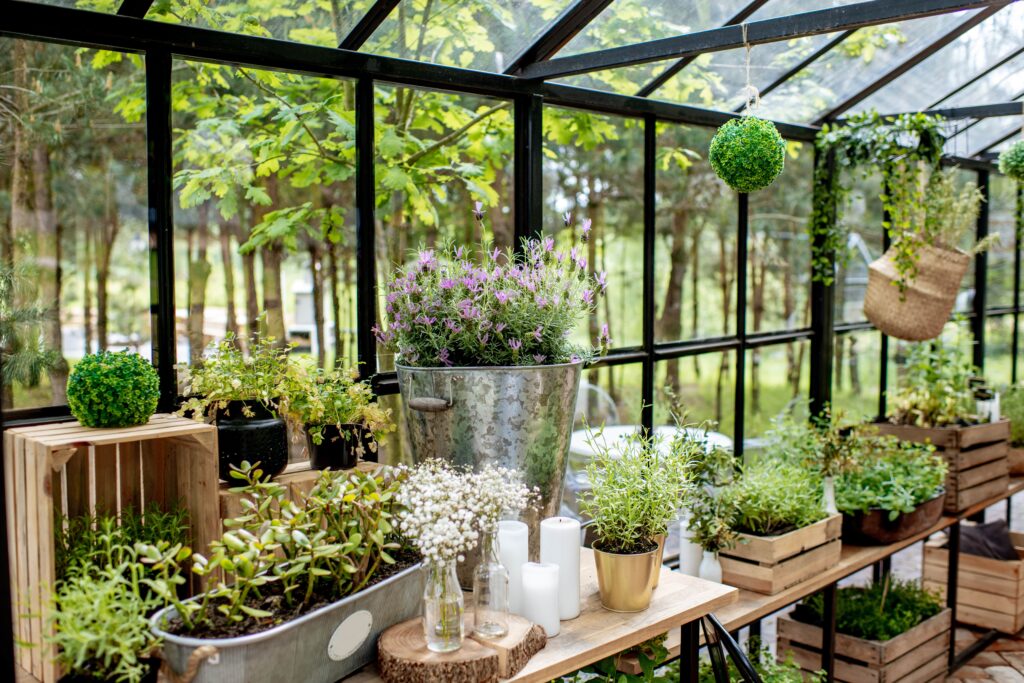Garden pots – so simple, yet so versatile and effective at providing beautiful splashes of colour and scent to your garden. No garden? No problem! The balconies of many apartments are often seen with beautiful displays of pots and containers to bring an essence of a garden to a previously limited area for cultivation. The diverse range of pots and containers now available to buy (or create your own planters from almost anything!) will allow your imagination to run wild and the low maintenance nature of pots is very appealing.

Easy to maintain and care for, what’s not to love about container gardening? Here, we give tips on how to successfully create perfect garden pots to make your friends and neighbours envious and your garden a place of joy.
Placement of your pots
When considering plants for your pots, it’s important to consider where the location of each pot will be. If your chosen location is in the shade most of the day, sun-loving plants will not survive and vice versa. Planting for the conditions in which the pot is to live is key. A trip to your local garden centres can be useful for advice if you aren’t the most green-fingered of people. It is important to place complementing types of plants together to ensure they flourish and getting that knowledge beforehand will help you maximise the potential of your pots.
Water and drainage
Before beginning to plant, ensure that your pots have adequate drainage to allow water to soak away and prevent soil from becoming waterlogged. Soggy roots don’t make for happy plants. Ensure all the pots or containers you wish to use have drainage holes, if you need to, drill some in the container yourself. To further assist drainage, broken pieces of old pots or pebbles can be placed in the bottom, before the soil goes in. As plants grown in pots do not have a water source from the ground, staying on top of watering is vitally important, especially during periods of hot weather. Watering pots every single day can be time-consuming. Irrigation systems for pots do exist, but they can be a tad expensive. Check out this article from plantsforallseasons.com which shows you how to make your own.
Also consider the water needs of the plants you have chosen – a dry conditions lover such as Lavender might not make such a good bedfellow for a moisture craving Astrantia.
Structure of plants
Structure and balance are important considerations when making an aesthetically pleasing pot, especially if you want your pots to make an eye-catching impact. Architectural plants with a bold, spiky upright leaf such as a Cordyline can look dramatic against the softening effect of Begonias. Think about the colours of the foliage of the plants that you have chosen – do they blend or clash? Consider also whether you want flowers all year round – try to pick flowers and plants that flower at varying times so that you have a continual display of colour. Bulbs planted deeply in pots, amongst the annuals and perennials, can provide that essential splash of late Winter/early Spring colour when little else is happening in the still sleeping garden.
Correct Choice of Soil
Soil choice is super important in creating the perfect garden pots. It’s not only the anchor that holds the plants into the pot but the source of water, air and nutrients for your plants too. Consider choosing a compost specifically created for pots, which can help to ensure that your plants grow and thrive in the conditions. If in doubt talk to your local garden centre for advice on correct soil types for your chosen pot plants.
Size of Pot and Plant
Size is everything when it comes to your choice of plant versus the size of pot. A huge Delphinium will soon topple a tiny pot and likewise, a tiny Viola will be lost in a very large one. Giving some thought to the width and height of your pot when choosing your flowers and plants can create a beautifully balanced display. Bear in mind that plants grown in pots will eventually outgrow their home and will need to be re-planted so that they do not become ‘pot-bound’. Pots of different sizes can look striking when grouped together, larger pots and plants at the back and the smaller pots in front.
We hope this article has given you some useful advice and tips on how to create perfect garden pots, we hope you have lots of fun experimenting with different pots and plants. Want to show off your creations? Why not post a picture to our Facebook page, we would love to see your garden in bloom!






